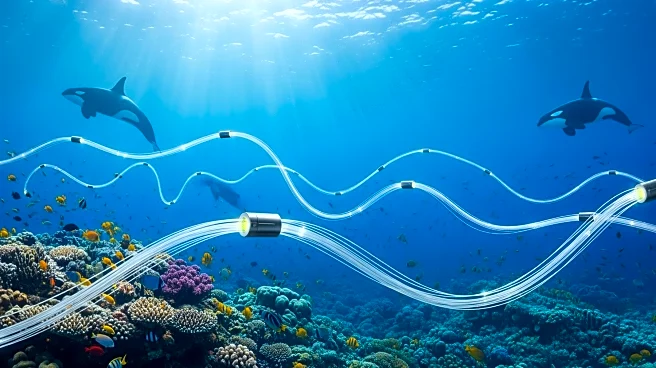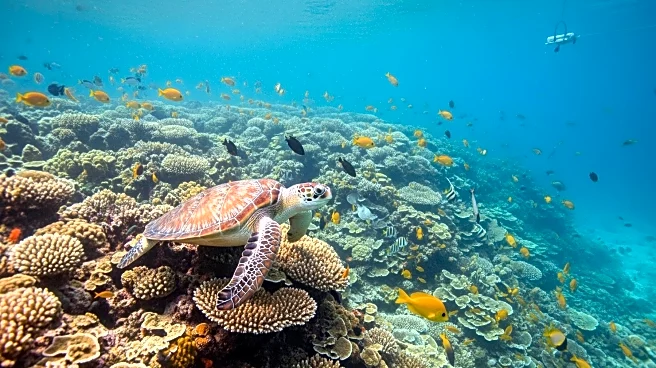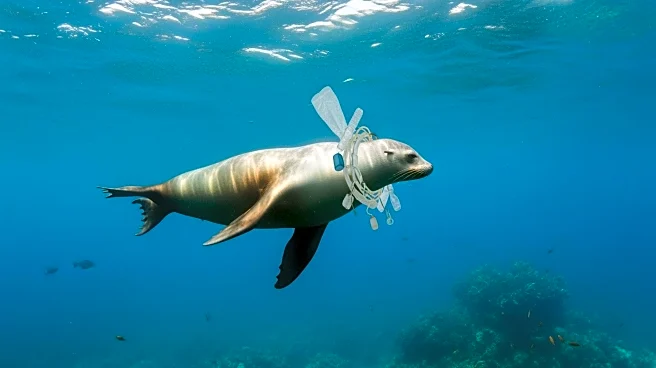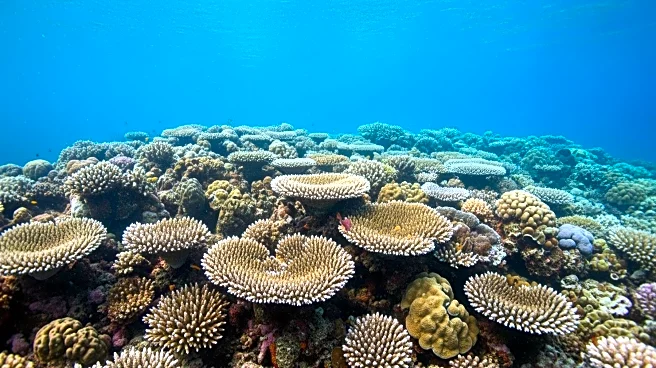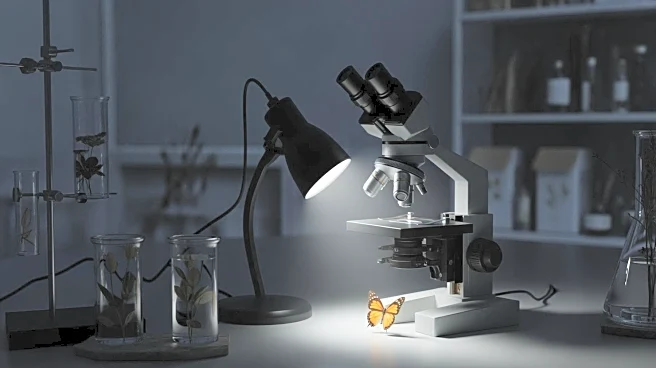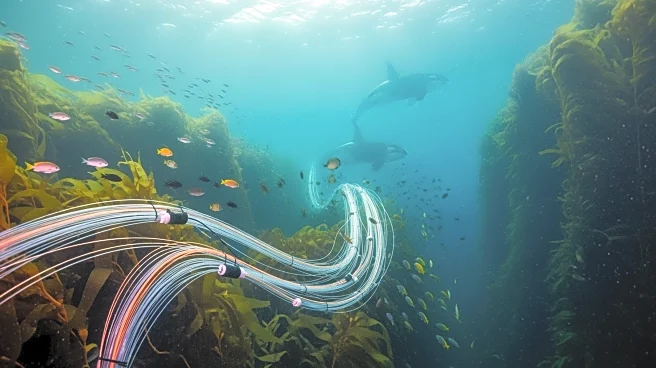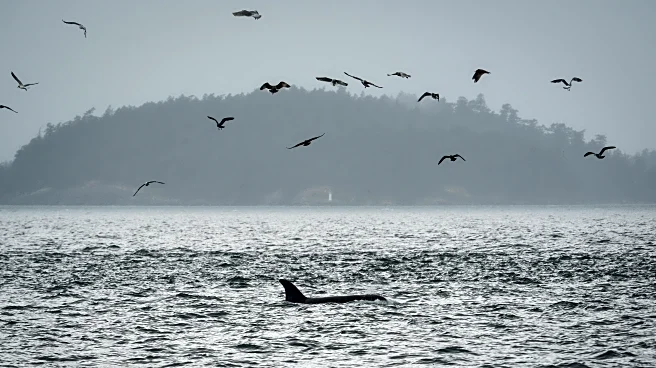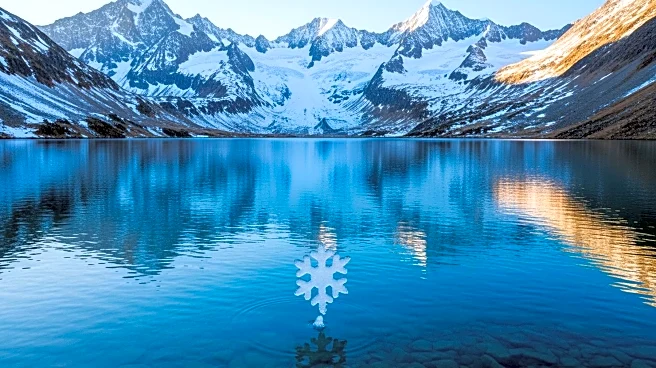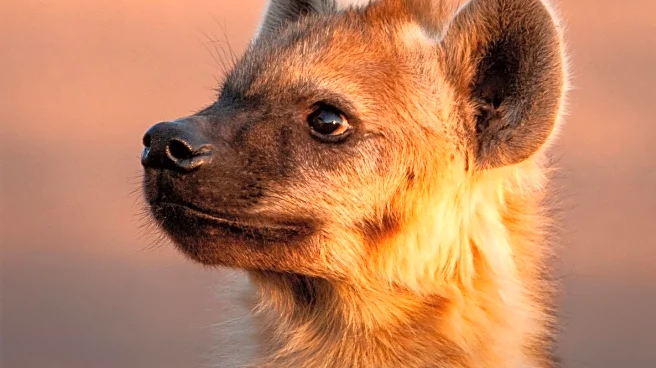What's Happening?
Researchers from the University of Washington have deployed a 1.3-mile fiber-optic cable in the Salish Sea to test its ability to detect vocalizations of endangered orcas. This innovative approach uses
Distributed Acoustic Sensing (DAS) technology, which transforms fiber-optic cables into continuous underwater microphones. The goal is to capture the clicks, calls, and whistles of orcas, providing insights into their responses to ship traffic, food scarcity, and climate change. If successful, this method could turn existing undersea cables into a vast listening network, aiding conservation efforts worldwide.
Why It's Important?
The Southern Resident orcas are critically endangered, with their population hovering around 75. They face threats from underwater noise pollution, toxic contaminants, and food scarcity. The use of DAS technology could provide real-time data to help mitigate these threats, offering conservationists the ability to dynamically manage human activities that impact orcas. This technology could also enhance understanding of orca behavior, potentially leading to more effective conservation strategies. The broader implications include the potential for global ocean monitoring using existing fiber-optic infrastructure.
What's Next?
The success of this experiment could lead to the implementation of DAS technology across the world's 870,000 miles of undersea cables, creating a comprehensive ocean monitoring network. This network could inform conservation policies and help prioritize areas for protection under the upcoming High Seas Treaty. Researchers will continue to refine the technology to ensure it can accurately detect high-frequency orca vocalizations, which are crucial for their survival.
Beyond the Headlines
The deployment of DAS technology represents a significant advancement in marine conservation, highlighting the intersection of technology and environmental science. This approach not only offers a novel solution to monitoring endangered species but also underscores the importance of leveraging existing infrastructure for conservation purposes. The project could pave the way for similar initiatives aimed at protecting other marine species and ecosystems.
